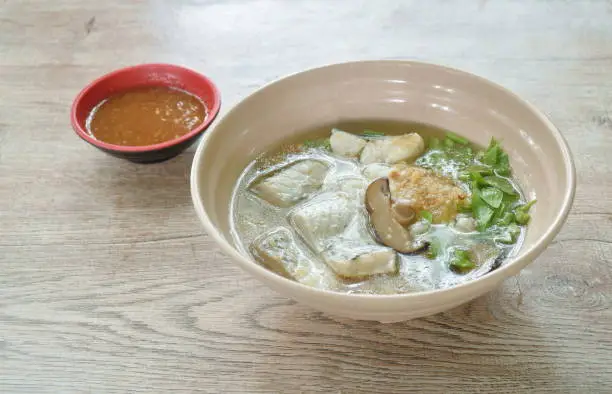Congee Is Rice Porridge Is Arroz Caldo
Last Thursday, Speedy and I were at the market. There was one stall selling premature chicken eggs (if we had left the house earlier, there would have been more stalls selling them but these things sell like cakes and I was lucky to still find some in that one stall) and I grabbed half a kilo. Not half a kilo of eggs because they are sold along with the egg sacs, liver, and gizzards. I just haggled with the vendor so that I could get a substantial number of eggs instead of a token few.
Now, I wasn’t going to write about the congee and the premature chicken eggs from last Thursday. There are enough congee recipes in the archive. But then I learned yet another new technique for making congee so I bothered to take photos last Thursday three different ways to serve plain congee. A dish made by boiling grains in liquid (water, milk, or broth) and served soup-like in a bowl is a porridge. Rice cooked in more water or broth than the grains can absorb, resulting in a soupy mixture, is called congee and is just one of the many kinds of porridge found in various cultures across the globe.
Congee is a feature of Asian cuisine where it is eaten as breakfast or an anytime snack one of the many things that the Chinese imparted to countries where they migrated or which China has occupied at one time or another. In the Philippines, it is known as lugaw or pospas or, just as often, by its Spanish name, arroz caldo. It is bubur in Malay and Indonesian cooking, and chao in Vietnamese cuisine. In Japan, it is okay; in Korea, it is junk.
But enough about culture and history. This is about preparing congee in a modern kitchen. I used to cook my congee by tossing the uncooked sticky rice in hot oil or by drying and frying them, pouring in broth, and simmering everything until the rice grains were mushy. A reader commented that her mother does it by soaking ordinary (i.e., not glutinous) rice overnight before boiling. More recently, I learned another technique which, to me, results in the kind of congee served in humble rural homes across Asia. Just boiled rice.
Start by boiling long-grain rice (I used jasmine) and water or broth six to eight cups of liquid for every cup of rice. Lower the heat, cover, and simmer until the rice is done. Turn off the heat and leave the congee to sit for at least six hours. Yes, yes, there will be a lot of liquid in the pot and the liquid may appear thin at this point. Patience. Those six hours will allow the rice to cook some more. The starch will also go into the liquid making it thicker.
Reheat and simmer some more before serving. To give the congee a more porridge-like consistency, simmer it longer until the rice grains disintegrate and the mixture appears to be a homogenous thick white mass. I like my congee to have discernible, albeit puffed and split, rice grains. Once you have your basic congee, you can add just about anything to it. Crack a raw egg into a bowl of piping hot congee, sprinkle with green onions and toasted garlic bits (or crisp fried onion slices, or both) and you have a hot filling meal just like in the photo above.

